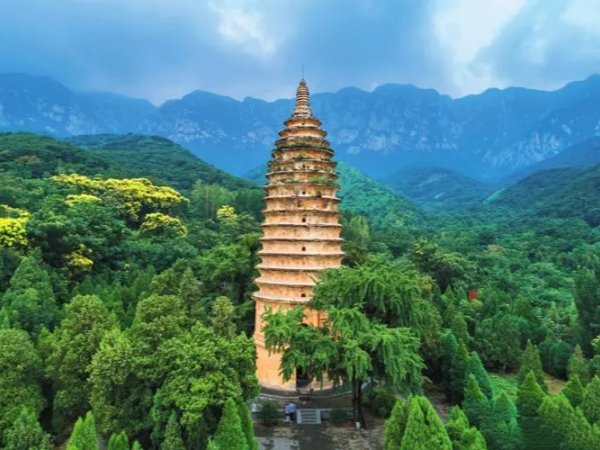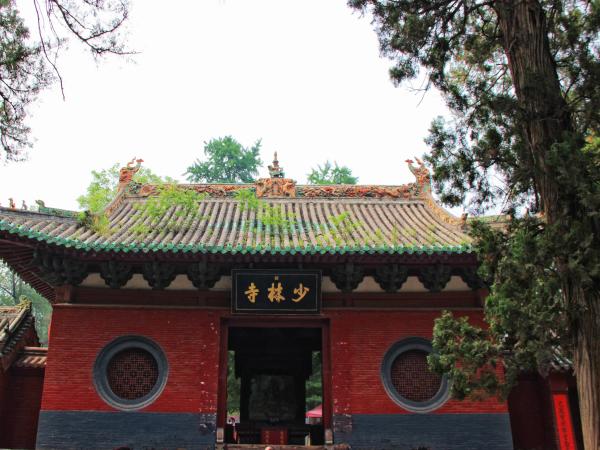Dengfeng
Henan has a long history and splendid culture, and almost every city has a rich historical heritage, especially some county-level counties or cities, which have abundant cultural relics and historical sites, and some are at the forefront of the country, such as Dengfeng City. Dengfeng City is a county-level city, administered by Zhengzhou City. To the north is Song Mountain and to the south is the Ji and Xiong Mountain ranges. Already in the Xia Dynasty, it was Yu's capital in Yangcheng. In the time of Emperor Wu of the Han Dynasty, Songgao County was established, which was renamed Songyang County in the Sui Dynasty. During the reign of Empress Wu Zetian, the name was changed to Dengfeng County, which has endured to this day. Dengfeng has rich tourist resources, especially in terms of cultural and historical relics. There are 1,497 immobile cultural relic sites, including 24 units and 26 elements under key national protection, ranking first among the country's counties (cities) and is known as "the land of cultural relics."

Dengfeng's cultural and historical relics are not only numerous, but also of high quality, and many are recognized globally. For example, the group of historic buildings of the Center of Heaven and Earth is a World Heritage Site, a key unit of protection of national cultural relics, and a level 5A tourist site. This group of buildings includes the Zhougong Shadow Measuring Platform, the Observatory, the Songyue Temple Pagoda, the Taishi Portico, the Zhongyue Temple, the Shaoshi Portico, the Qimu Portico, the Songyang Academy, the Huishan Temple, and the Shaolin Temple group of buildings, spanning a period of 2000 years. It bears witness to the history and culture of the central region of China, as well as the history and culture of China as a whole, being a calling card globally.

As early as 1961, China published the first group of key national cultural relic protection units, a total of 180 sites, of which Dengfeng has five: the Taishi Portico (Eastern Han Dynasty), the Shaoshi Portico (Eastern Han Dynasty), the Qimu Portico (Eastern Han Dynasty), the Songyue Temple Pagoda (Eastern Han Dynasty), and the Observatory (Yuan Dynasty). This fully demonstrates Dengfeng's deep cultural and historical heritage. Han Dynasty porticoes are a type of memorial building and are considered "stone books" of the Han Dynasty and "living fossils" of ancient Chinese architecture. The Taishi, Shaoshi, and Qimu Porticoes in Dengfeng are collectively known as the Three Han Porticoes of Mount Zhongyue, and they have high historical and cultural value.

Dengfeng not only has 24 national cultural relic protection units, but also a large number of cultural relic protection units at the provincial, Zhengzhou city, and Dengfeng city levels, such as Shiconghe Rock Inscriptions, Yingyang Site, Lao Jun Cave, Ziyun Temple, and Longtan Temple Great Hall. Among them, the Shiconghe Rock Inscriptions have a long history and rich cultural content. This place was originally a stone forest. Wu Zetian came here twice, held a grand banquet, and wrote the "Poem of the Summer in Shicong," along with numerous poems and texts by his ministers, including Crown Prince Li Xian, Prince Xiang Li Dan, Prince Liang Wu Sansi, and famous figures such as Di Renjie, Zhang Yizhi, Zhang Changzong, and Yao Chong. He then ordered them to be inscribed on the cliffs, becoming a major cultural event of the time.

Dengfeng in Henan has a long history, a splendid culture, and numerous historical sites and cultural relics, earning it the title of "the land of cultural relics." Have you had the opportunity to visit it?
 Popular Dengfeng Tours
Popular Dengfeng Tours
 Attractions in Dengfeng
Attractions in Dengfeng









